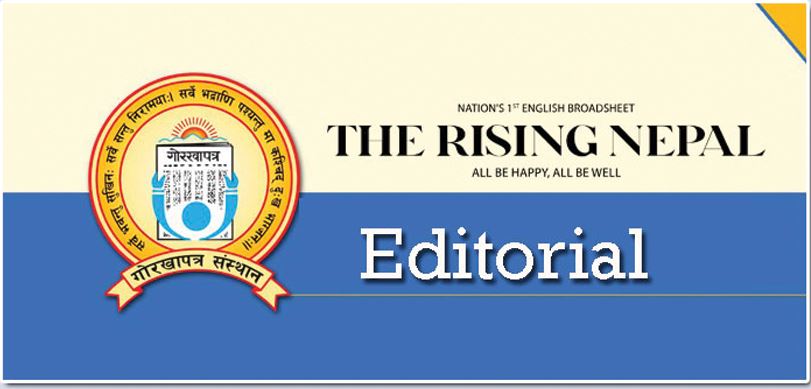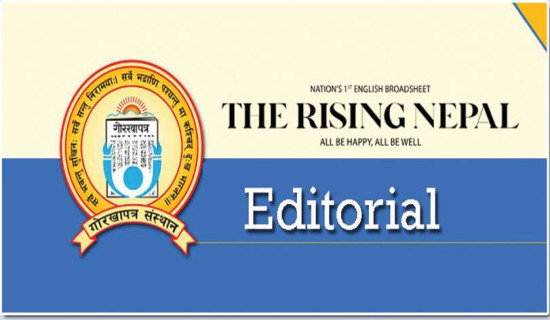- Monday, 18 August 2025
Cross-border Cooperation
Mountains in Nepal are warming faster than the global average. Glaciers are melting, rivers are swelling, and the risks of sudden floods, avalanches, and landslides are increasing every year. These are no longer isolated events. Disasters in one country's mountains spill beyond the border. Yet, our region still lacks a strong cross-border cooperation to deal with these threats. In recent years, floods and landslides in mountain river basins of a country have resulted in the loss of lives and property in the neighbouring country as well. The recent devastating floods in the Bhotekoshi in Rasuwa serve as a wake-up call to forge cross-border climate cooperation.
A flood that originated in the Tibet Autonomous Region of China caused a huge loss of life and property in Nepal. Floodwaters reach Nepal within hours when a supraglacial lake bursts in Tibet. When rivers swell in Nepal, the impact is felt downstream in India. These disasters do not wait for border checks. But our warning systems often stop at the border, leaving communities unprepared for what is coming their way. Nepal's disaster management agencies have improved their local response capacity, but when climate-related hazards are now multi-layered, efforts of a single country to avert them or reduce damages from them are not sufficient. A flood may follow landslides all within a short period. Such compound events require joint early warnings, shared data, and joint action plans among neighbouring countries.
Without it, even the best-prepared communities are still vulnerable. Several instruments to forecast these threats are now in place. Satellites, remote sensors, and water models can track glacial changes and foretell downstream impacts. However, there is no coordination or timely information sharing among countries. As a result, warnings become too late for people to act upon them. For Nepal, transboundary climate cooperation is not a choice. It is a necessity. The rivers that feed our agriculture, supply power to our hydropower plants, and support millions of livelihoods are fed by glaciers and precipitation regimes shared with others.
If upstream countries do not share timely information regarding probable risks, Nepali downstream communities bear the brunt. Likewise, if Nepal is not passing on warnings to people beneath us, we risk causing the same harm there. This needs a more robust regional compact so that information travels fast and across borders. That would imply instant information about rain, glaciers, and river levels. Joint training exercises, joint monitoring stations, and planned evacuation schemes can help reduce, if not avert, loss of life and property. Such cooperation should not be limited to governments, research
institutes, local people, and the media, but must also be brought within the network.
Nepal must also improve its capacity to evaluate risks before approving development projects in areas prone to risks of floods and landslides. All too frequently, the impact of debris-rich glacial floods is miscalculated, leaving bridges, hydropower facilities, and roads vulnerable. With shifting climate patterns, infrastructure planning has to move. The developed world, responsible for the most significant climate crisis, should help mountainous nations like Nepal with technology transfer, capital, and human development. It is climate justice. Climate crisis doesn't know boundaries. If Nepal and the neighbouring countries, India and China, collaborate, share information, and work together, we can transform early warnings into timely action, reducing the losses during the disasters.














